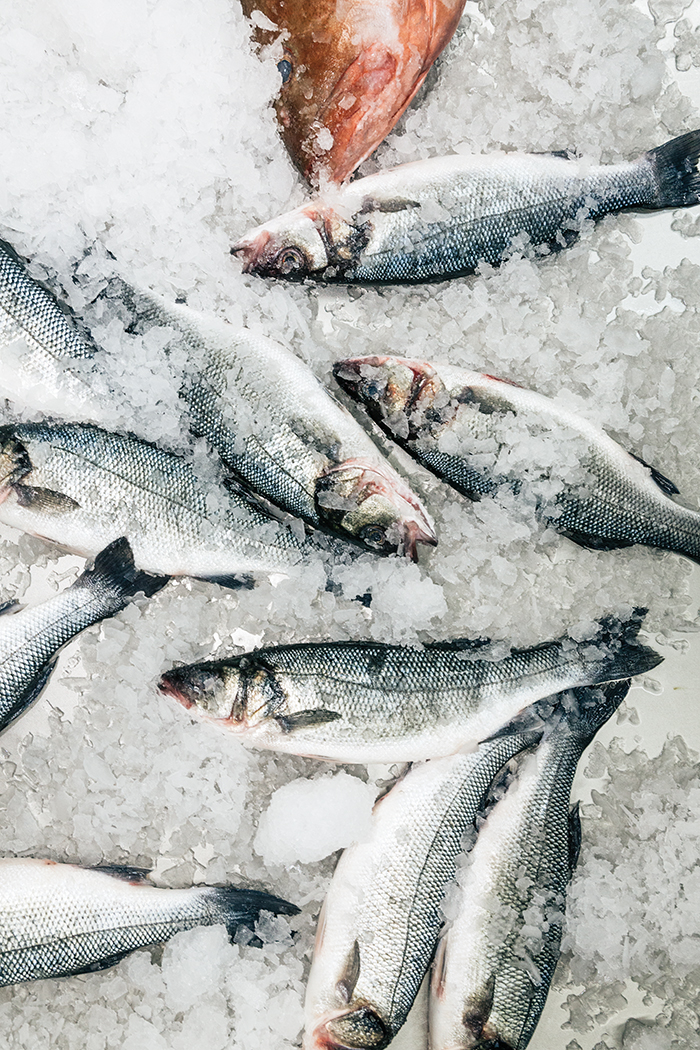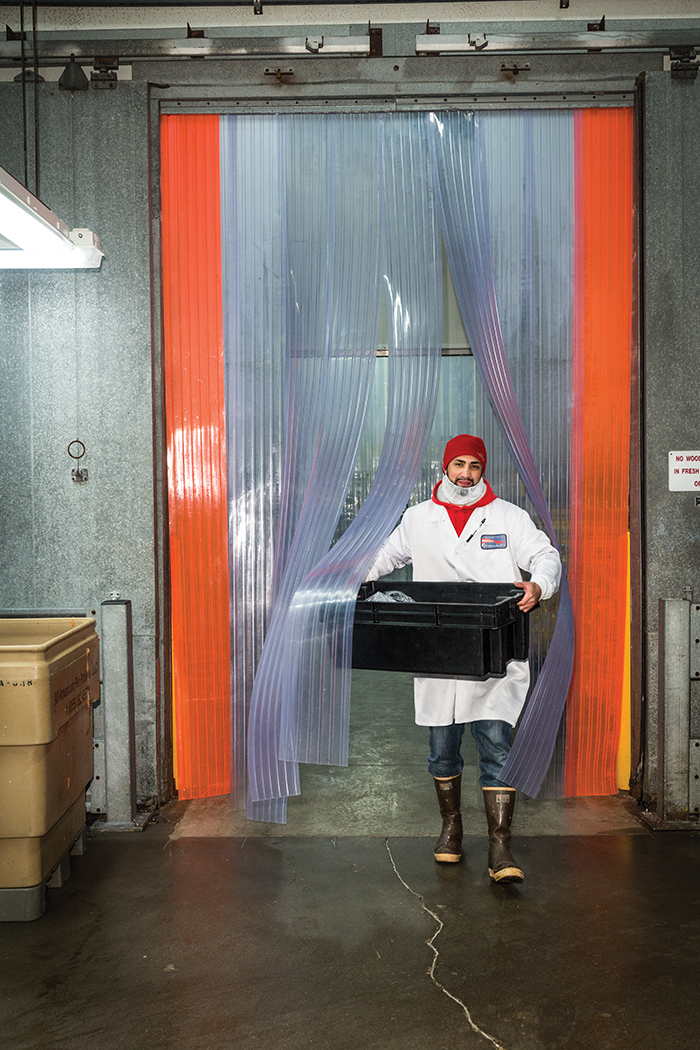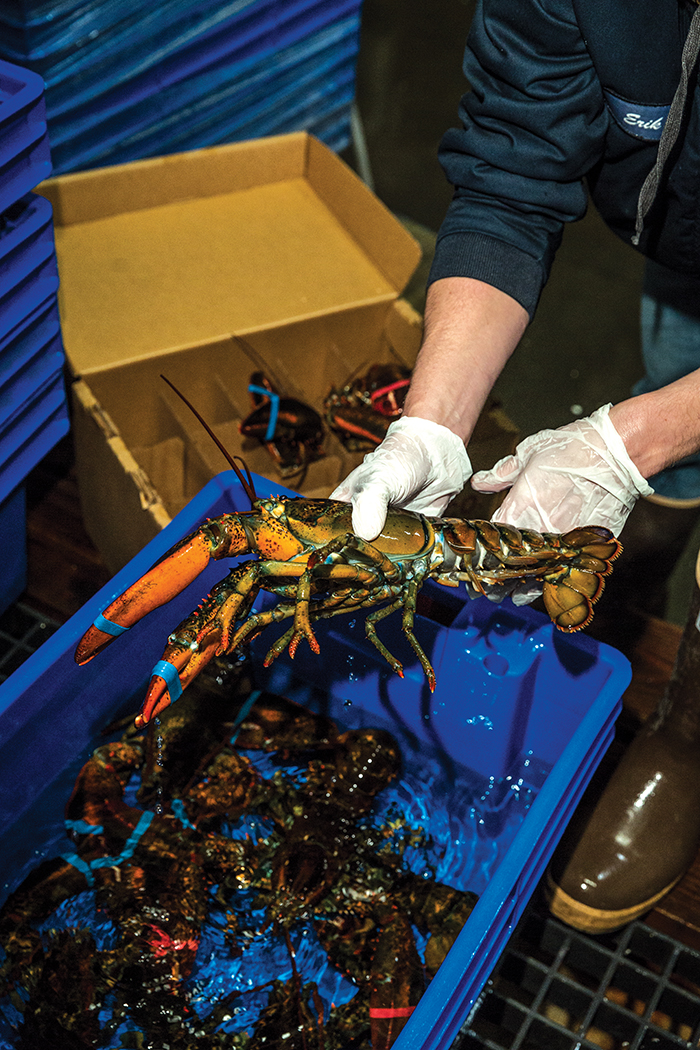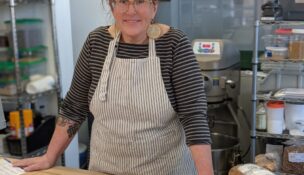How a landlocked company found success in the sea
Third-generation Seattle Fish Co. has stocked inland eateries since 1918
Margaret Jackson //January 8, 2016//


How a landlocked company found success in the sea
Third-generation Seattle Fish Co. has stocked inland eateries since 1918
Margaret Jackson //January 8, 2016//
James Iacino knows fish.
As a 12-year-old, he accompanied his father to work at Seattle Fish Co., the business founded by his grandfather, Mose Iacino, in 1918. Over the years, he’s done everything from paperwork to cutting fish to loading and driving trucks.
 He started full-time with the Denver-based company eight years ago, after graduating from Colorado State University with a degree in political science and business management. He began working in purchasing, traveling the world to meet vendors and even lived in Japan working as a sushi chef. Then it was onto sales, before taking the helm of the company as president and chief executive in 2009.
He started full-time with the Denver-based company eight years ago, after graduating from Colorado State University with a degree in political science and business management. He began working in purchasing, traveling the world to meet vendors and even lived in Japan working as a sushi chef. Then it was onto sales, before taking the helm of the company as president and chief executive in 2009.
“Dad was 64 when I came in, and he was ready to retire,” Iacino, 33, says. “He always nudged me to join the company, but he was always open to us doing whatever we wanted to do.”
Though his father, Edward, is now pressing him to have a child so the baton can be passed to a fourth generation, Iacino says the current thinking in succession planning is for the children of business owners to work outside the family business first.
“It’s important to get experience doing something else,” says Iacino, who worked in movie theaters and restaurants during summers his family spent in Michigan starting in 1995.
Iacino’s younger sister, Chelsea, worked in the company’s human resources department until she moved to Roatan, Honduras, following her fishy bloodline to become a master scuba diver.
COMPANY CHRONICLE
Seattle Fish derives its name from its origins – as a 16-year-old, Mose Iacino developed a system in 1918 for transporting fresh seafood by railcar from Seattle to Colorado. Fish was packed in sawdust and ice, and at each train stop the ice was replenished to keep the product fresh. Mose started out selling oysters and rabbit from a pushcart in Lower Downtown, before taking over a corner of his uncle’s shop at 1537 Market St. Soon, he was peddling his wares wholesale to restaurants in the Brown Palace and Oxford hotels.
Mose, who died in 1995, went to the office every day until his 90th birthday.
“You’d see him riding an exercise bike and smoking cigars,” James Iacino says. “He ate fish every day. He was always looking over my dad’s shoulder. Even though Dad had taken over and had ownership, he was always in the office. My dad did not do that to me.”
Seattle Fish remained at a storefront on Market Street until 1982, when Edward built a new 65,000-square-foot facility in Park Hill. Initially, the space had a retail shop, but was closed because the company didn’t want to compete with its retail customers.
 At the time the new facility was built, 80 percent of the company’s products were frozen, so the building boasted the largest freezer west of the Mississippi River at 30,000 square feet. As Seattle Fish shifted more toward fresh seafood — today 80 percent of its products are fresh — the team modified the freezer, shrinking it to 10,000 square feet, with the rest redesigned for refrigeration. The facility includes live tanks for lobsters and sea urchins and has a separate area for shellfish to keep the rest of its products safe for customers with allergies.
At the time the new facility was built, 80 percent of the company’s products were frozen, so the building boasted the largest freezer west of the Mississippi River at 30,000 square feet. As Seattle Fish shifted more toward fresh seafood — today 80 percent of its products are fresh — the team modified the freezer, shrinking it to 10,000 square feet, with the rest redesigned for refrigeration. The facility includes live tanks for lobsters and sea urchins and has a separate area for shellfish to keep the rest of its products safe for customers with allergies.
Though Seattle Fish no longer receives its products by rail, transportation of fresh seafood to the middle of the country remains a key component of the business operations. Some products come by air, but most are transported in refrigerated trucks.
“Air freight is great and moves very quick; but truck is much more affordable,” says Derek Figueroa, the company’s chief operating officer. “We have teams of drivers driving overnight and switching off. They take [the fish] right from the docks. We can move it pretty quick on trucks and hold it pristinely. A big determinant of its quality is how it’s handled. If you keep it as cold as you can, fish will last in good condition for a really long time.”
Though the company distributes its products primarily in Colorado, it also reaches restaurants and retailers in Utah, Idaho and Wyoming. In 2003, it opened Seattle Fish International in Kansas City, Mo. Of the company’s 200 employees, roughly 160 work in Denver, the rest in Kansas City.
“We have an opportunity to expand,” Figueroa says. “We’re trying to figure out where it makes sense to go.”
TODAY’S MARKET
 One of the big challenges facing the company is the perception that customers can’t get fresh seafood in landlocked states. But Figueroa says that is changing as people become more educated about how to prepare seafood.
One of the big challenges facing the company is the perception that customers can’t get fresh seafood in landlocked states. But Figueroa says that is changing as people become more educated about how to prepare seafood.
“We understand some of the hesitation of cooking at home,” he says. “But it’s the quickest-cooking protein and it’s really easy. Our 9-year-old can cook fish. We have some opportunities in terms of partnering with our customers to teach the public how to cook.”
The company has about 1,500 customers throughout the Rocky Mountain region, with business evenly split between restaurants like Shanahan’s, TAG, Elway’s and Panzano, and supermarkets like King Soopers and Whole Foods, as well as specialty retailers from Marczyk Fine Foods to Seafood Landing in Denver’s Highland neighborhood. According to Iacino, King Soopers sells more fish than anyone in the state.
Bruce Johnson, owner of Seafood Landing, is part of the education process Figueroa envisions for store owners interacting with customers. Johnson, who opened the Highland storefront four years ago, offers customers tips for preparing seafood, as well as information about how a fish will taste.
Johnson says he gets about 85 percent of his inventory from Seattle Fish and its biggest competitor, Northeast Seafood Products, splitting his orders about evenly between the two.
“Seattle Fish is very customer-service oriented, and they carry consistent high-quality seafood items,” Johnson says. “They’ve been very accommodating to the store over the years. If I run into any kind of an issue, they help resolve it. Their shipments are very timely and their sales staff is professional and courteous. They’re a top-notch company.”
Acclaimed Denver chef Troy Guard, owner of TAG Restaurant Group, says about 90 percent of the seafood he uses in his restaurants comes from Seattle Fish Co., and has for about 15 years.
“Their seafood is always top quality,” says Guard, who is the mastermind behind about a dozen Denver restaurants, including TAG Continental Social Food, Bubu and Los Chingones. “They have a strong presence in the community, and they’ve come to the table to help us out with community charity events. That’s very helpful and standup of them.”
A day in the life
 Upon arriving at the 65,000-square-foot Seattle Fish Co. warehouse, which operates 24/7, the seafood is weighed, checked for temperature and inspected for quality. If it’s not up to snuff, the product is sent back to the supplier. In addition to using traditional sanitizers to kill bacteria, the company uses ozonated water, which is 52 percent more effective than chlorine and kills bacteria 3,100 times faster.
Upon arriving at the 65,000-square-foot Seattle Fish Co. warehouse, which operates 24/7, the seafood is weighed, checked for temperature and inspected for quality. If it’s not up to snuff, the product is sent back to the supplier. In addition to using traditional sanitizers to kill bacteria, the company uses ozonated water, which is 52 percent more effective than chlorine and kills bacteria 3,100 times faster.
Seattle Fish Co. is the only Colorado seafood company to have earned Level 3 SQF certification and one of just 7,436 SQF-certified companies in the world. This abbreviation stands for Safe Quality Food – one standard for food safety from fishery to fork.
“Nothing over 40 degrees is accepted,” Iacino says. “We also keep it on the bone until it’s cut to order, which is all done by hand. We do any level of cutting the chef or retailer requires. We don’t keep anything here for more than four days.”
The cut fish is then packed into containers coded with what the product is, what time it was packed, who the customer is and what route it will take before being loaded onto trucks for distribution. The first truck leaves by 10 p.m. and the last at 5:30 a.m.
Leftover bones and scraps are sold to All American Pet Proteins in Greeley, where they are made into pet food. The company prides itself on not being wasteful — less than 0.5 percent of everything that comes in its doors isn’t used.
A trip through the company’s warehouse requires a hairnet, booties and a white coat over a warm coat; most of the facility is kept at 33 degrees. Because fish won’t freeze unless the temperature is below zero, the freezer is kept at minus 12 degrees. In addition to seafood, the company sells dry products like olive oils, vinegars and rices, which account for about 2 percent of its business.
“This was always my favorite place to work because it was warm,” James Iacino says.
Seattle Fish moves about 10 million pounds of seafood a year. The team buys its goods from the three American coasts and from countries as far away as New Zealand, Norway and Chile. The company is always looking for Colorado products and sells fish farmed in Alamosa. Though it does not disclose its revenue, Iacino says it’s doubled in the last five years.
“Our company is on a great growth path,” he says.
Enjoy these images of a day in the life at Seattle Fish Co.
























